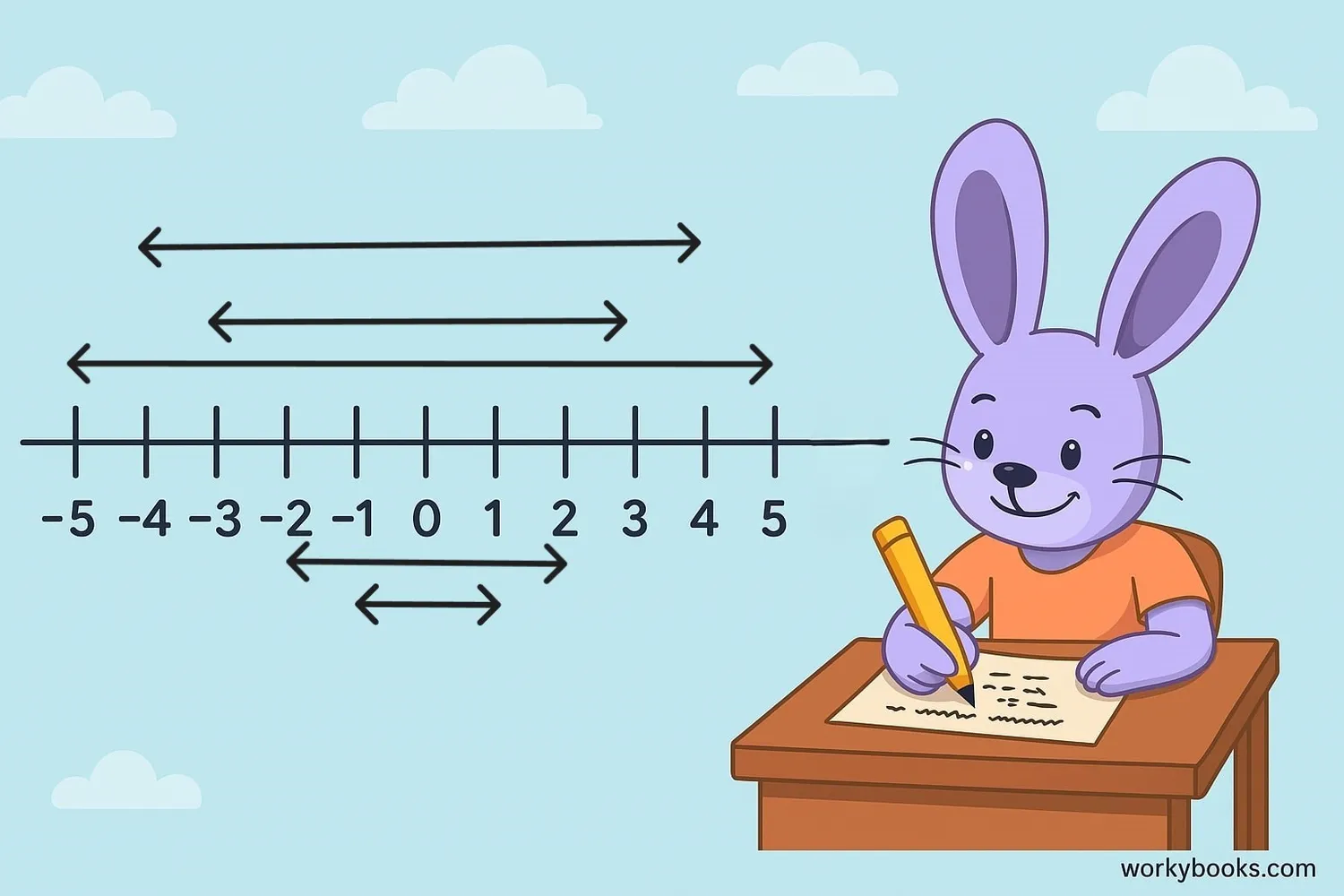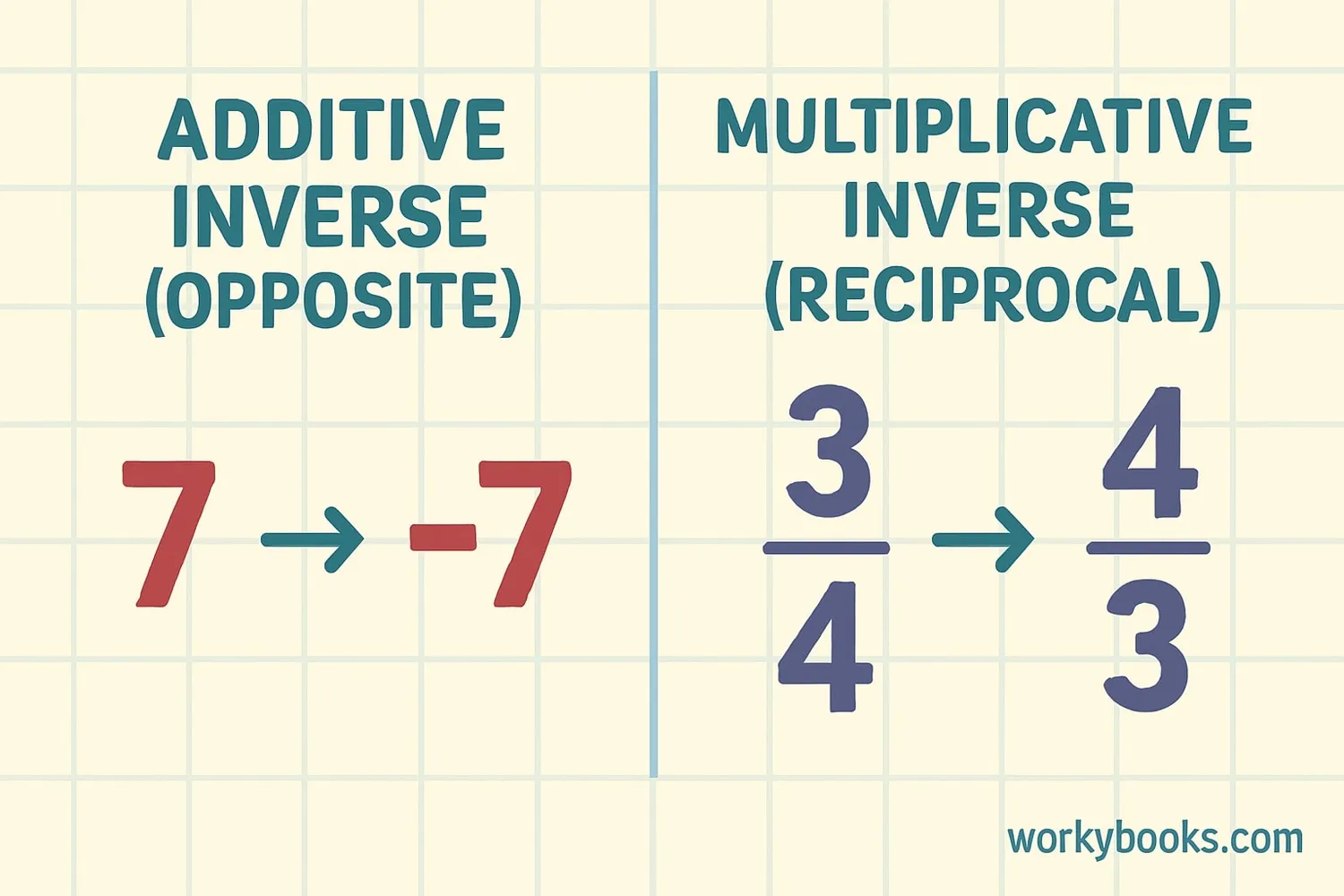Additive Inverse - Definition, Examples, Quiz, FAQ, Trivia
Learn about math opposites with simple explanations, examples, and practice activities
What is Additive Inverse?

The additive inverse of a number is its opposite. When you add a number to its additive inverse, you always get zero! This special property makes additive inverse a powerful math concept.
Think of it like this: If you have a positive number, its additive inverse is the negative version of that number. And if you have a negative number, its additive inverse is the positive version!
For example:
- The additive inverse of 7 is -7 because 7 + (-7) = 0
- The additive inverse of -4 is 4 because -4 + 4 = 0
- The additive inverse of 0 is 0 because 0 + 0 = 0
Additive Inverse Formula
For any number "a", adding its opposite "-a" gives zero
Key Concept
Additive inverse is about finding the "opposite" that cancels out a number to reach zero.
Additive Identity

The additive identity is a special number that doesn't change other numbers when added to them. Can you guess what it is? That's right - it's zero!
When you add zero to any number, the number stays the same:
- 5 + 0 = 5
- -3 + 0 = -3
- 0 + 0 = 0
This is why zero is so important in the concept of additive inverse. The additive inverse of a number is the value that gets you to zero when added to the original number.
Remember
The additive identity is always zero, and every number has an additive inverse.
Examples of Additive Inverse

Let's look at some examples to understand additive inverse better:
Temperature
If it's 5°C above zero, the additive inverse is -5°C (5 below zero).
5 + (-5) = 0
Money
If you have $10, the additive inverse is owing $10 (or -$10).
10 + (-10) = 0
Elevator
Going up 3 floors is +3, going down 3 floors is -3.
3 + (-3) = 0 (back to starting floor)
Finding Additive Inverse
To find the additive inverse of any number, multiply it by -1
Try This
What is the additive inverse of -8? (Hint: Multiply by -1: -8 × -1 = 8)
Multiplicative Inverse

Don't confuse additive inverse with multiplicative inverse! While additive inverse deals with addition and zero, multiplicative inverse deals with multiplication and one.
The multiplicative inverse of a number is its reciprocal. When you multiply a number by its multiplicative inverse, you get 1:
- The multiplicative inverse of 4 is 1/4 because 4 × (1/4) = 1
- The multiplicative inverse of 1/3 is 3 because (1/3) × 3 = 1
- The multiplicative inverse of -5 is -1/5 because -5 × (-1/5) = 1
Notice that zero doesn't have a multiplicative inverse because you can't multiply by anything to turn zero into one!
Key Difference
Additive inverse: a + (-a) = 0
Multiplicative inverse: a × (1/a) = 1
Practice Quiz
Test your understanding of additive inverse with this 5-question quiz:
Frequently Asked Questions
Here are answers to common questions about additive inverse:
Math Trivia
Discover interesting facts about numbers and opposites:
Historical Origins
The concept of negative numbers and additive inverse was first documented in ancient China around 200 BCE in "The Nine Chapters on the Mathematical Art."
Zero's Journey
The number zero and the concept of additive inverse took centuries to be accepted in Europe. Many mathematicians initially rejected negative numbers as "absurd."
Quantum Opposites
In physics, additive inverse appears in concepts like matter and antimatter - particles that cancel each other out when they meet, similar to how numbers and their inverses sum to zero.
Infinite Opposites
In advanced mathematics, additive inverse applies to infinite sets and complex numbers. Every number, no matter how large or complex, has an additive inverse.


